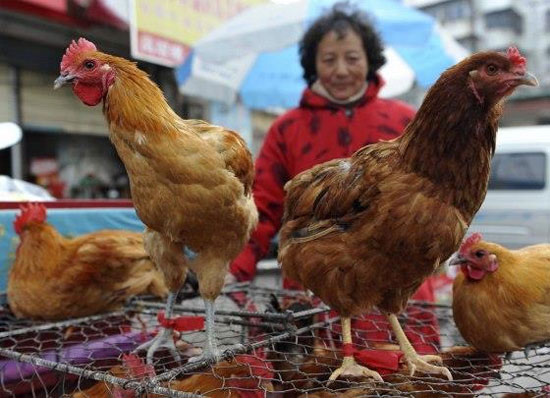Warning of H7N9 flu from China may spread to Vietnam
The number of H7N9 bird flu cases in China has increased to 7 people, of which 2 have died. Concerned about possible disease in Vietnam, the Ministry of Health requires units to closely monitor severe cases of acute respiratory infections.
>>>Two Chinese people died of bird flu H7N9
Dr. Tran Nhu Duong, Deputy Director of the National Institute of Hygiene and Epidemiology, 7 cases in China are the first cases of influenza A / H7N9 virus causing serious illness in people, so the professionals are very concerned. follow. The general characteristic of influenza viruses is that they are highly variable. Therefore, if a new strain of H7N9 virus is highly virulent and can be transmitted from person to person, it is very worrying.
Therefore, in order to proactively prevent the penetration of H7N9 influenza virus, the Ministry of Health has collaborated with the Department of Animal Health and the Ministry of Agriculture and Rural Development to strengthen the surveillance of this flu in poultry.
The Ministry of Health also asked the provincial Health Departments and Institutes to coordinate with the veterinary agencies and local authorities to strengthen supervision, early detection and timely handling of outbreaks in poultry. At the same time, well implement border medical quarantine, close supervision for people on entry, timely medical treatment for suspected cases, paying special attention to visitors entering from the region with shifts. sick.

The number of cases of H7N9 bird flu in China has increased to 7 people. (Photo: AP)
The Ministry of Health recommends that units should monitor cases of suspected severe viral pneumonia in health facilities and communities, promptly taking samples for testing. Hospitals that are ready to take medicine, isolated areas, are ready to well organize the collection, isolation, treatment of patients, limit death when patients are present. At the same time, promoting propaganda activities to instruct people to use clean poultry food, clear origin, ensure food safety and hygiene.
The National Institute of Hygiene and Epidemiology has also directed the focal points in the surveillance system to enhance the sampling of suspect cases. The Institute currently has sufficient human resources, machinery and biological products to conduct tests, detect cases of influenza A / H7N9 if any.
According to Dr. Duong, in order to prevent the spread of this influenza strain, people need to perform good personal hygiene, especially regularly washing their hands with soap, implementing the principles of ensuring food safety and hygiene. Limit close contact with people who show acute respiratory infections, avoid putting their hands on the nose and mouth, clear the place and workplace, and regularly clean surfaces and tools around people disease by common detergents. At the same time improve health by eating, resting and exercising reasonably sports . In particular, people should pay attention not to transport, trade, use animals (pigs, poultry) sick, dead or unknown source.
If you have the flu, wear a mask to limit the spread to others. When there is a high fever, cough, chest pain, difficulty breathing . need to go to the nearest medical facility for prompt examination and treatment.
According to The Guardian, the number of H7N9 bird flu in China has increased by 4, bringing the total number of patients to 7, including 2 deaths. All four new patients live in the northeast of Jiangsu Province, in critical condition. All work related to poultry slaughter, with signs of coughing, dizziness, fever, difficulty breathing.
Ian Jones, a professor of virology at the University of Reading, UK, said that at this stage there was no reason to alarm. Three types of H5, H7 and H9 bird flu, are considered by experts to be a potential threat to humans.
Influenza A / H7N9 is a virus derived from poultry. Currently, the WHO affirms that this is the first time this infection causes serious illness in humans, and yet there is no evidence of human-to-human transmission.
- Warning for H7N9 flu can spread from person to person
- China added 10 cases of H7N9 infection in 1 day
- Vietnam urgently responds to H7N9 flu from China
- H7N9 can spread among family members
- 4-year-old baby carries H7N9 but does not show flu
- H7N9 influenza virus can spread from person to person
- 87 Chinese people died of bird flu H7N9
- More cases of H7N9 infection in China
- 20 people died from H7N9 in China
- Find out the origin of the deadly strain of H7N9
- Detecting H7N9 virus in Guangdong
- China discovered new H7N9 virus
 March 2012: Launching H5N1 vaccine for poultry
March 2012: Launching H5N1 vaccine for poultry Experts comment on the mysterious gradual disappearance of the Delta variant in Japan
Experts comment on the mysterious gradual disappearance of the Delta variant in Japan Danger of the two Delta . branch variants
Danger of the two Delta . branch variants 2020 pandemic flu attack humans?
2020 pandemic flu attack humans?